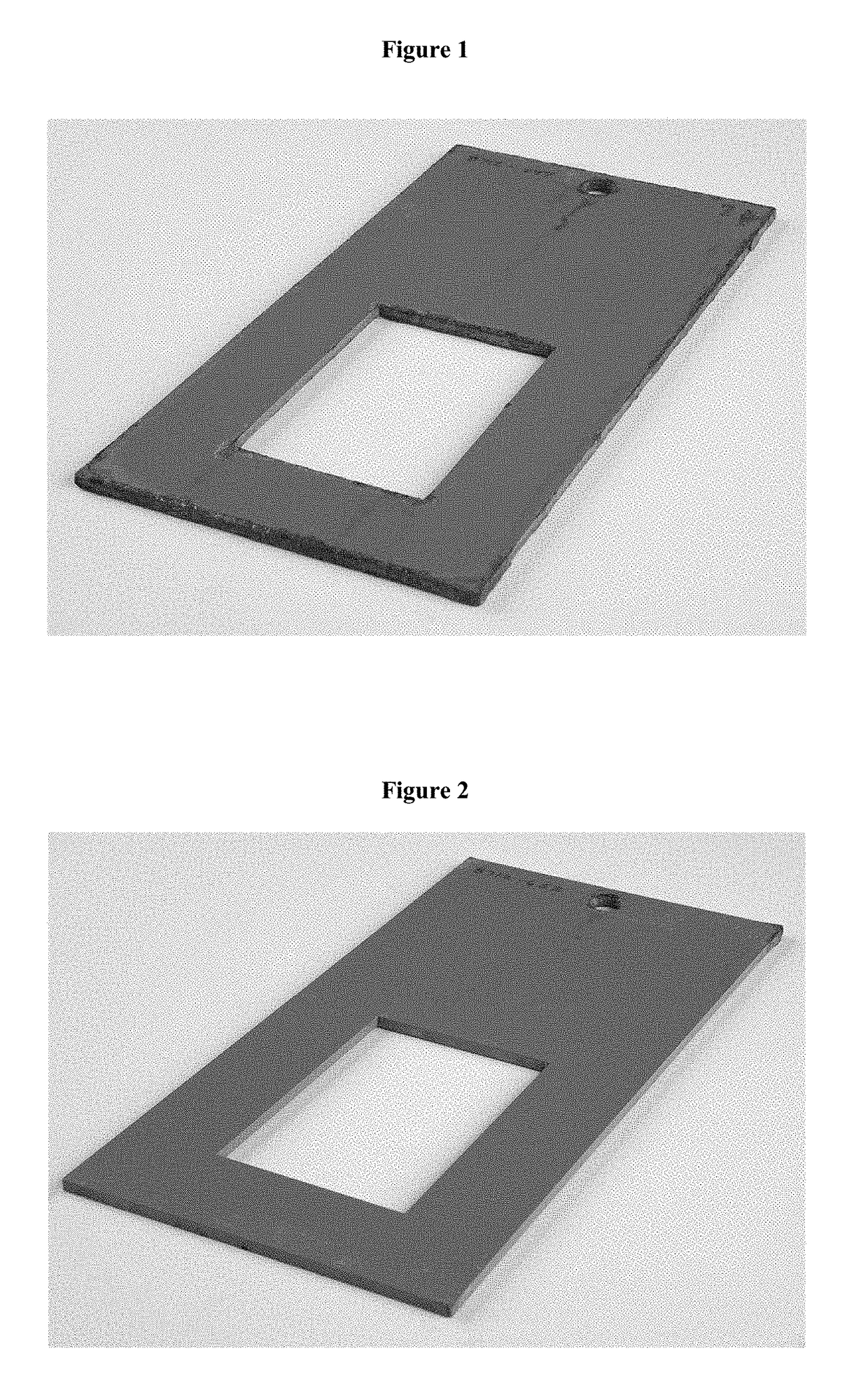High Edge Cathodic Epoxy Electrocoat Composition
- Summary
- Abstract
- Description
- Claims
- Application Information
AI Technical Summary
Benefits of technology
Problems solved by technology
Method used
Image
Examples
example 1
Preparation of the Electrocoating Composition (Inventive Example)
[0062]The electrocoating composition used to form a coated article was prepared as a two-part system including a pigment paste part and a resin part. The pigment paste part was formed by mixing various components in the amounts shown in Table 1 to form an intermediary grind paste. The grind paste was mixed with a high speed dispenser and put through a media mill to disperse the solid material.
TABLE 1Grind paste componentAmount (wt %)Epoxy salt17.3104-A surfactant0.25Lactic Acid2.6DI Water41.3Tin catalyst3.04Dispersant3.02Carbon Black0.7Titanium Dioxide24.5Silica-based additive6.5Film forming agent0.8
[0063]After the grind paste was prepared, the pigment paste part of the composition was prepared by mixing the grind paste with solvent and deionized water. Table 2 lists the resulting component concentrations of the pigment paste part of the electrocoating composition.
example 2
Preparation of the Electrocoating Composition (Comparative Example)
[0066]The electrocoating composition used to form the coated article of Example 2 was prepared as a two-part system in a similar manner to that discussed above for the coated article of Example 1. However, the grind paste prepared for the electrocoating composition for Example 2 did not include the silica-based additive. Thus, the resulting coating on the substrate for the coated article of Comparative Example A did not include the silica-based additive in the crosslinked matrix.
example 3
Corrosion Testing
[0067]The corrosion resistance, specifically edge corrosion resistance, of the coated articles from Examples 1 and 2 was measured. Test panels made of cold rolled steel and measuring 4 in.×8 in. were prepared with a laser-cut insert. The panels were pretreated with iron phosphate and a deionized water rinse and then electrocoated with the inventive composition of Example 1 or the comparative composition of Example 2, according to the process described above. The corrosion resistance of the coatings was then assessed by exposing the panels to a corrosive environment according to the procedure described in the SAE J2334 cyclic corrosion test procedure. The extent of corrosion of each test panel is then measured.
[0068]As shown in FIG. 1, the coated article of Example 1 showed significantly less corrosion, including edge corrosion (only about 10% edge corrosion) relative to the coated article of Example 2 as shown in FIG. 2 (about 80% edge corrosion). Accordingly, the e...
PUM
| Property | Measurement | Unit |
|---|---|---|
| Fraction | aaaaa | aaaaa |
| Fraction | aaaaa | aaaaa |
| Fraction | aaaaa | aaaaa |
Abstract
Description
Claims
Application Information
 Login to view more
Login to view more - R&D Engineer
- R&D Manager
- IP Professional
- Industry Leading Data Capabilities
- Powerful AI technology
- Patent DNA Extraction
Browse by: Latest US Patents, China's latest patents, Technical Efficacy Thesaurus, Application Domain, Technology Topic.
© 2024 PatSnap. All rights reserved.Legal|Privacy policy|Modern Slavery Act Transparency Statement|Sitemap

